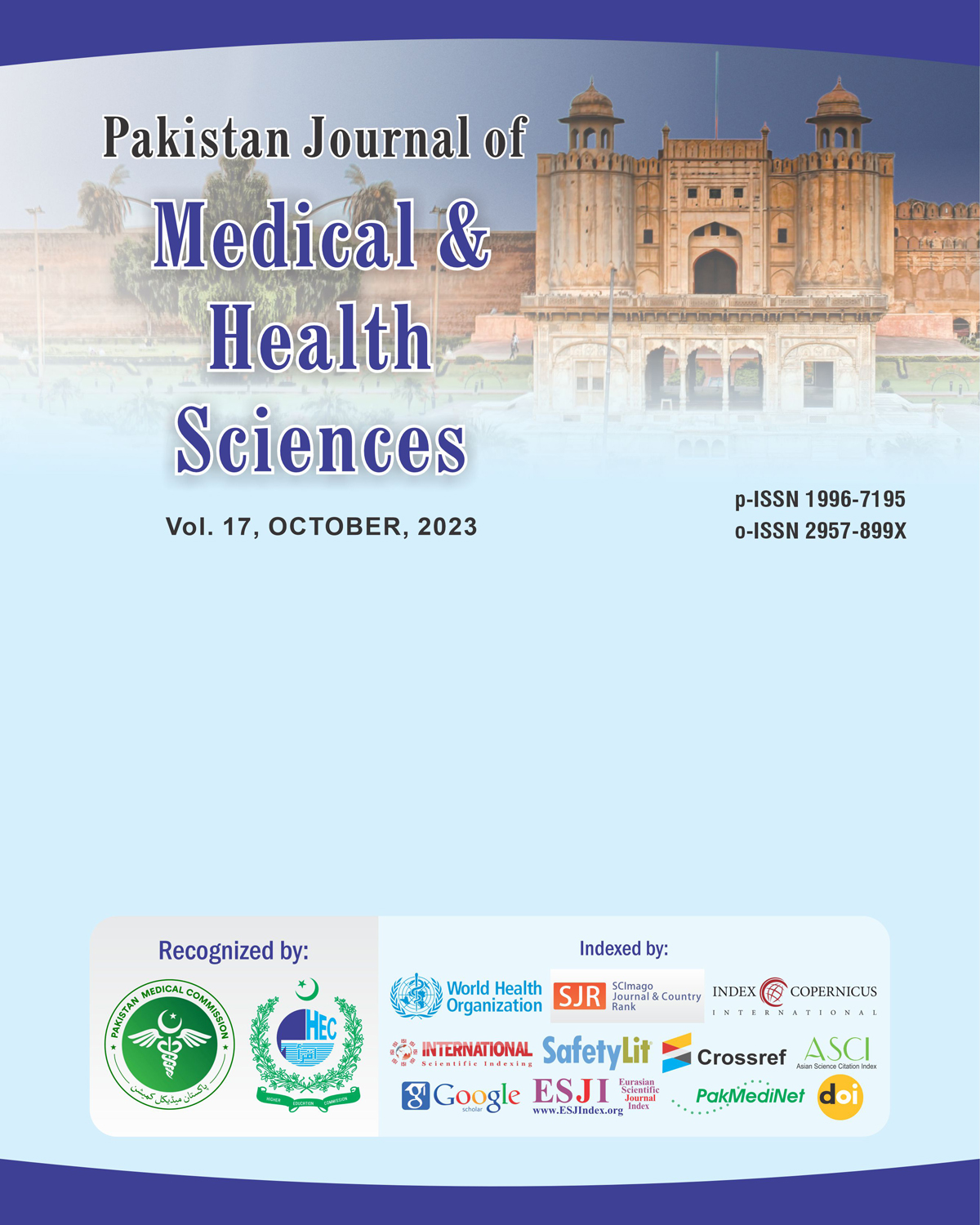Otorhinolaryngological Presentations of Mucormycosis amid COVID-19 Pandemic in Khyber Teaching Hospital Peshawar
DOI:
https://doi.org/10.53350/pjmhs2023171083Abstract
Background: Mucormycosis is opportunistic infection which is caused by a filamentous fungus. It is unknown how common mucormycosis-related oto-rhino-laryngological involvement is in COVID-19 patients.
Objective: The aim of this study was to explore the Otorhinolaryngological presentations of mucormycosis amid COVID-19 pandemic in a tertiary care hospital.
Methodology; The current study was conducted at the department of ENT in Khyber Teaching hospital from January 2021 to June 2021 after taking approval from the ethical committee of the institute. People with mucor continued to come in emergencies were enrolled in this study because the elective services were overlooked due to COVID 19. Each individual had either previous evidence of COVID-19 infection at the time of diagnosis or a clinical or histological diagnosis of mucormycosis. The RT-PCR was used to diagnose COVID-19 in subjects. Diagnosis of Mucormycosis was made based on the microscopic examination. Endoscopic ethmoidectomy, sphenoidotomy, and/or frontal sinusotomy, endoscopic medial maxillectomy, orbital clearing, and pterygopalatine fossa investigation for debridement of necrotic tissues were among the surgical debridement procedures. G For data analysis SSPS was Used. A significance level of p<0.05 was used to determine the confidence interval at 95%.
Results: In this study a total of 27 participants age ranged from 20 to 90 years old were enrolled. Out of which 16(59.2%) were males and 11(40.7%) were females. Majority of the individuals 14(51.8%) were in the age group 41 to 60 years old. The Acute Medical Unit accounted for the bulk of patient presentations 12 (44.4%). 18 (66.6%) of the 27 individuals reported positive COVID-19 PCR results. 19 (70%) of the individuals had not received the COVID-19 vaccination. Endoscopic surgery to remove lesions from the left side’s nasal cavity, maxillary sinuses, and ethmoid sinuses was the most often performed surgical technique. 10(37.0%) . A heterogeneous lesion affecting the nasal, maxillary, & ethmoid sinuses 13(48.1%) was the most often seen CT scan finding. A heterogeneous lesion affecting the unilateral maxillary, ethmoid, frontal, and sphenoid sinuses 4(14.81%) was found associated with it. The two most frequent presentations 9(33.3%) were nasal obstruction and headache. Among the co-morbidities, diabetes mellitus and hypertension predominated 9(33.3%)
Conclusion: It was concluded that infection with COVID-19 and uncontrolled diabetes are common causes of mucormycosis of the paranasal sinuses with or without orbit and cerebral extension in non-vaccinated individuals.
Keywords: COVID-19 pandemic, mucormycosis, filamentous fungus
Downloads
How to Cite
Issue
Section
License
Copyright (c) 2023 Asghar Ullah Khan, Asghar Ali, Sanaullah Bhatti, Najaf Abbas, Javed Iqbal, Agha Aftab Hussain

This work is licensed under a Creative Commons Attribution 4.0 International License.


